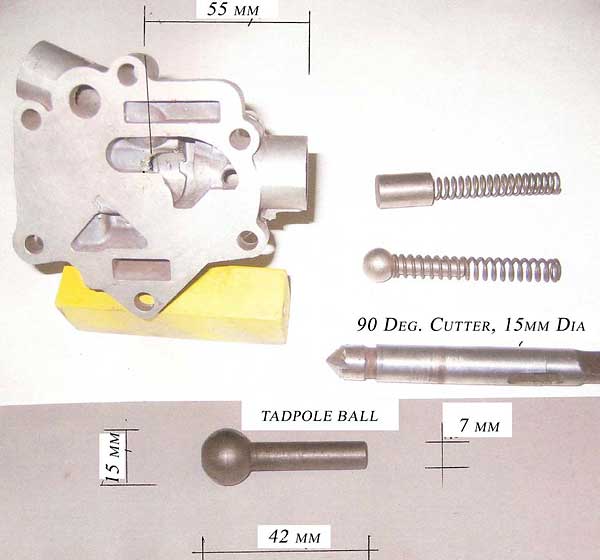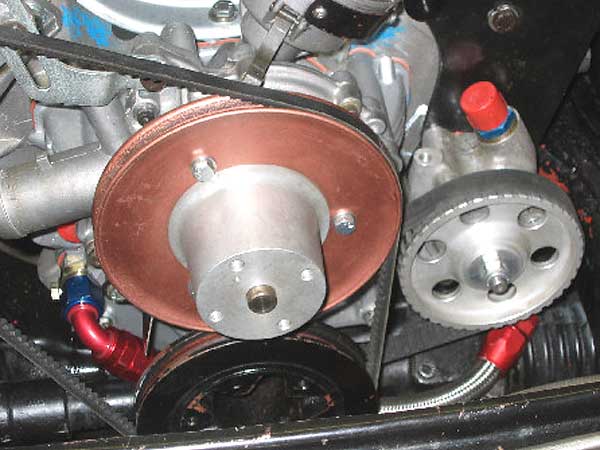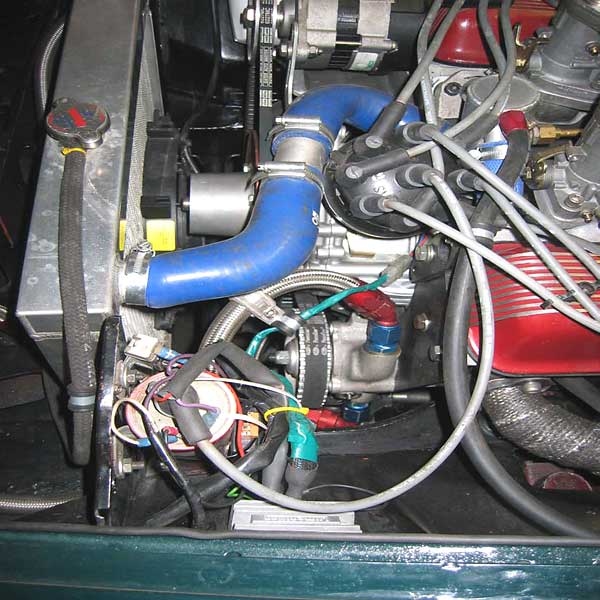�
�
�
�
�
�
� by: Jean Monfort�
� The Rover oil pump has a weakness: the relief valve, which is no more than a small � spring-assisted piston. This piston uncovers the return port and allows oil to bypass � if the oil pressure becomes too high. Fitting a new piston can cause jamming in the � bypass position. The oil pressure falls immediately to zero! The jamming can sometimes � be temporary, so the oil pressure is inconsistent.�
� There are two ways to avoid the worse case scenario: (1) replace the whole unit with � both a new piston relief valve AND a new expensive pump base, or (2) better yet, fit � a cheap Tadpole type relief valve into your oil pump base.�
�
�
�
Rover Oil Pump Upgrades
� This article appeared in The British V8 Newsletter - Volume IV, Issue 1 - January 2006�� by: Jean Monfort�
� The Rover oil pump has a weakness: the relief valve, which is no more than a small � spring-assisted piston. This piston uncovers the return port and allows oil to bypass � if the oil pressure becomes too high. Fitting a new piston can cause jamming in the � bypass position. The oil pressure falls immediately to zero! The jamming can sometimes � be temporary, so the oil pressure is inconsistent.�
� There are two ways to avoid the worse case scenario: (1) replace the whole unit with � both a new piston relief valve AND a new expensive pump base, or (2) better yet, fit � a cheap Tadpole type relief valve into your oil pump base.�
�
�
 �
�
� How do you do that?
� 1- Mill a small seat in the oil pump base with a 90 degree cutter.
� 2- Make a Tadpole type valve, on a lathe, from high grade steel.
� 3- Harden the ball by heat treating.
� 4- Increase the oil flow by enlarging the port close to the valve.
� 5- It is not necessary to replace the spring. The old one will be more than enough � when compressed by the ball.�
� If the oil pump gears are new, or in good condition, the pump will now put out oil � at 45 PSI (at idle) and will never forsake you. After all that, if you are afraid of � a pump axle breaking, the only other option is the external oil pump!�
�
�
�
 �
�
� How do you do that?
� 1- Mill a small seat in the oil pump base with a 90 degree cutter.
� 2- Make a Tadpole type valve, on a lathe, from high grade steel.
� 3- Harden the ball by heat treating.
� 4- Increase the oil flow by enlarging the port close to the valve.
� 5- It is not necessary to replace the spring. The old one will be more than enough � when compressed by the ball.�
� If the oil pump gears are new, or in good condition, the pump will now put out oil � at 45 PSI (at idle) and will never forsake you. After all that, if you are afraid of � a pump axle breaking, the only other option is the external oil pump!�
�
�
The Ultimate Oil Pump?�
� To fit an external oil pump, the timing cover must be removed and slightly modified � to create threaded "in" and "out" oil ports. �
� For the first step, remove the oil-pump gears and clamp the timing-cover to a milling � machine. Mill-off the pump housing, being careful not to damage the rest of the cover. � The object of doing this is to access and enlarge the stock "in" and "out" (going to � the block) oil ducts. In doing that, you will hit some chambers or ports, and they � must be sealed by TIG welding.�
� �
�
� In the second step, plane a small seat around the holes, thread the ducts and screw in � two male/male adapters and washers. Never use light alloy adapters as they are not � strong enough to hold the 5/8" SS braided hoses; use steel connectors. �
��
�
�
�
�
� To fit an external oil pump, the timing cover must be removed and slightly modified � to create threaded "in" and "out" oil ports. �
� For the first step, remove the oil-pump gears and clamp the timing-cover to a milling � machine. Mill-off the pump housing, being careful not to damage the rest of the cover. � The object of doing this is to access and enlarge the stock "in" and "out" (going to � the block) oil ducts. In doing that, you will hit some chambers or ports, and they � must be sealed by TIG welding.�
�
 �
�
� In the second step, plane a small seat around the holes, thread the ducts and screw in � two male/male adapters and washers. Never use light alloy adapters as they are not � strong enough to hold the 5/8" SS braided hoses; use steel connectors. �
�
| �
Enjoying this article? Our magazine is funded through the generous support of readers like you! � To contribute to our operating budget, please click here and follow the instructions. � (Suggested contribution is twenty bucks per year. Feel free to give more!)� |
�
�
Finally, refit the timing cover and connect the lower adapter to the entry of the �
external pump and the upper one to the oil filter exit. �
� The pump will be powered by the crank and your camshaft will only have to drive the � distributor. The pump bracket can be bolted to the left cylinder head. My oil pump � was made in England by 'Pace' (www.paceproducts.co.uk), and is the GB single stage � pressure type. But any other ones will work if a bypass is fitted. A 2.5'' geared � pulley mounted on the crank will drive a 4.5'' pump pulley at the right speed.�
� �
�
� Disclaimer: This page was researched and written by Jean Monford. Views expressed � are those of the author, and are provided without warrantee or guarantee. Apply at your � own risk.�
�
�
� The pump will be powered by the crank and your camshaft will only have to drive the � distributor. The pump bracket can be bolted to the left cylinder head. My oil pump � was made in England by 'Pace' (www.paceproducts.co.uk), and is the GB single stage � pressure type. But any other ones will work if a bypass is fitted. A 2.5'' geared � pulley mounted on the crank will drive a 4.5'' pump pulley at the right speed.�
�
 �
�
� Disclaimer: This page was researched and written by Jean Monford. Views expressed � are those of the author, and are provided without warrantee or guarantee. Apply at your � own risk.�

